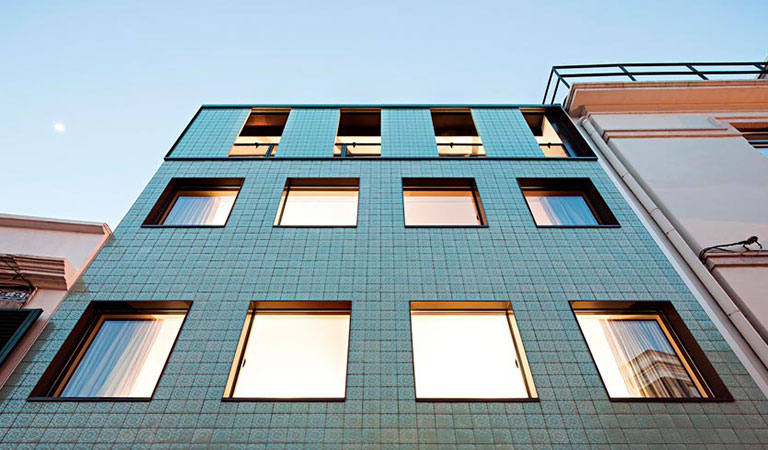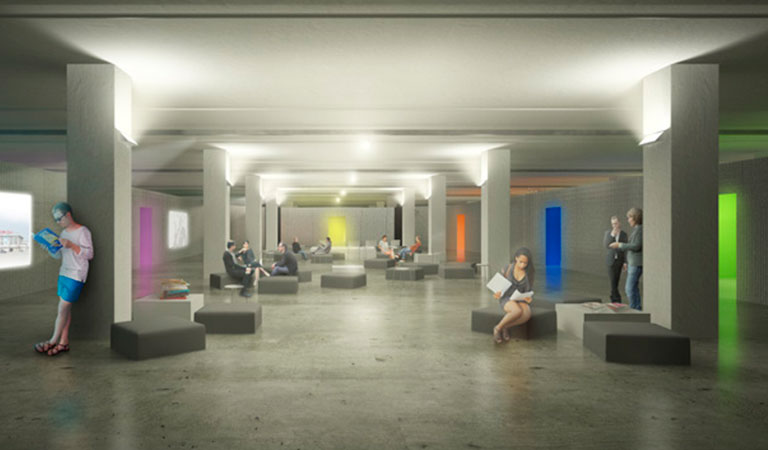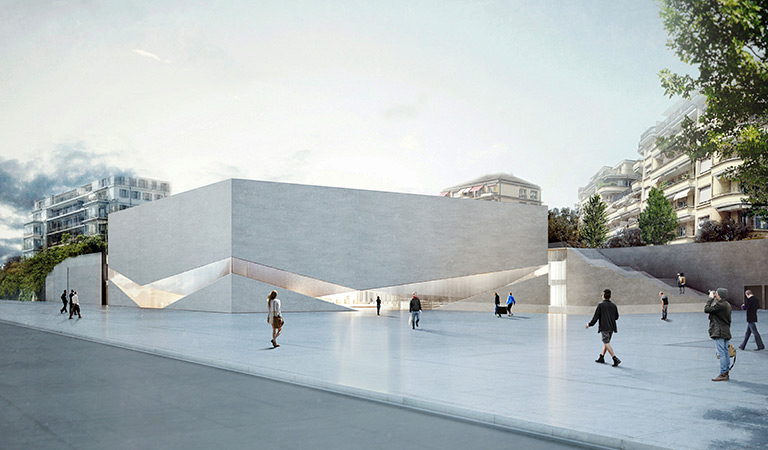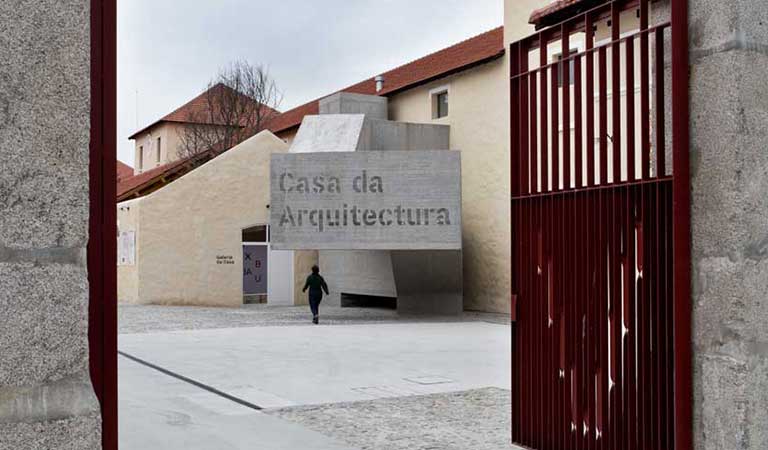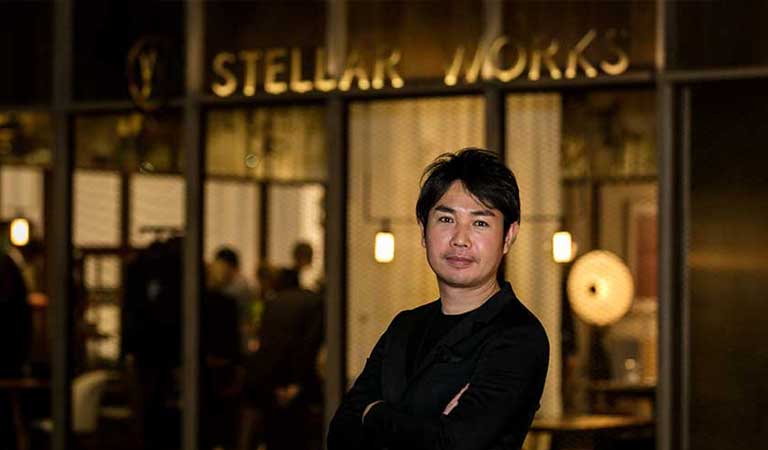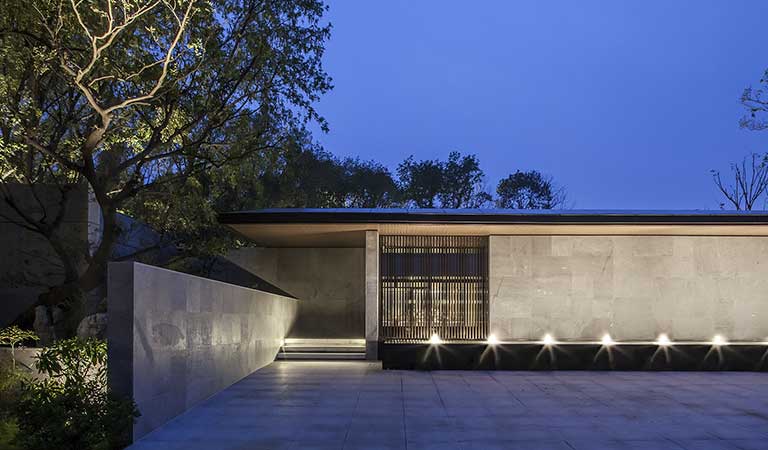Bonsai Restaurant
— Interview with Camarim Arquitectos —
Patrícia Sousa: It’s a restaurant that has been around for a long time, and the client wants to renovate the restaurant. And we love the restaurant, we love the food in the restaurant, we love the way that when we walk in there the whole world outside is outside, and that it is a separate environment. And this project relies heavily on this, how to grasp the features, the qualities of an existing space and reconfiguring the entire space, adapting it to modern requirements, but preserving the characteristics that make it the only Japanese and timeless restaurant in the city of Lisbon that it is.
Patrícia Sousa: É um restaurante que já existe à muito tempo, e a cliente pretende renovar o restaurante. E nós adoramos o restaurante, adoramos a comida do restaurante, adoramos a maneira que quando entramos lá todo o mundo que fica do lado de fora, fica do lado de fora, e aquilo é um ambiente à parte. E este projeto assenta muito nisso, como agarrar nas características, nas qualidades de um espaço existente e reconfigurar todo o espaço, adaptá-lo às exigências modernas, mas preservando as características que o tornam o restaurante único japonês e intemporal da cidade de Lisboa que ele é.
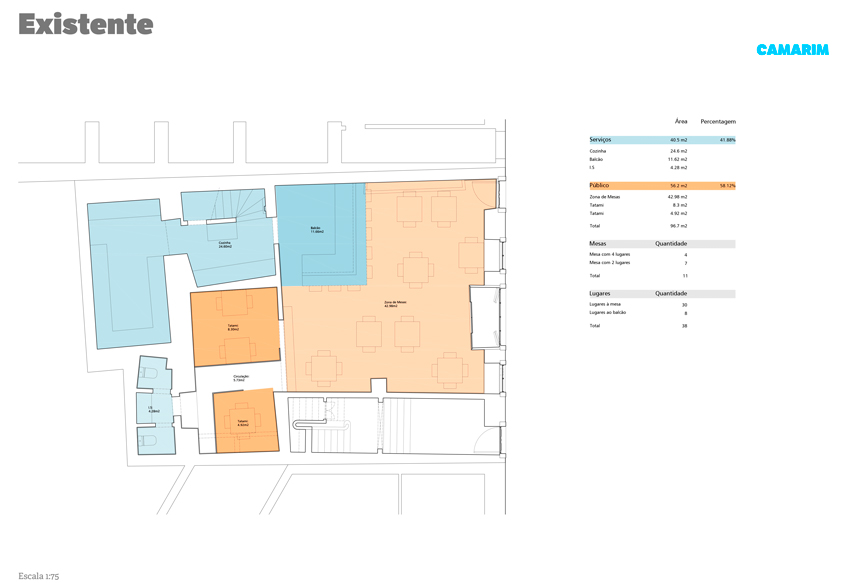
Existing plan © Camarim Arquitectos
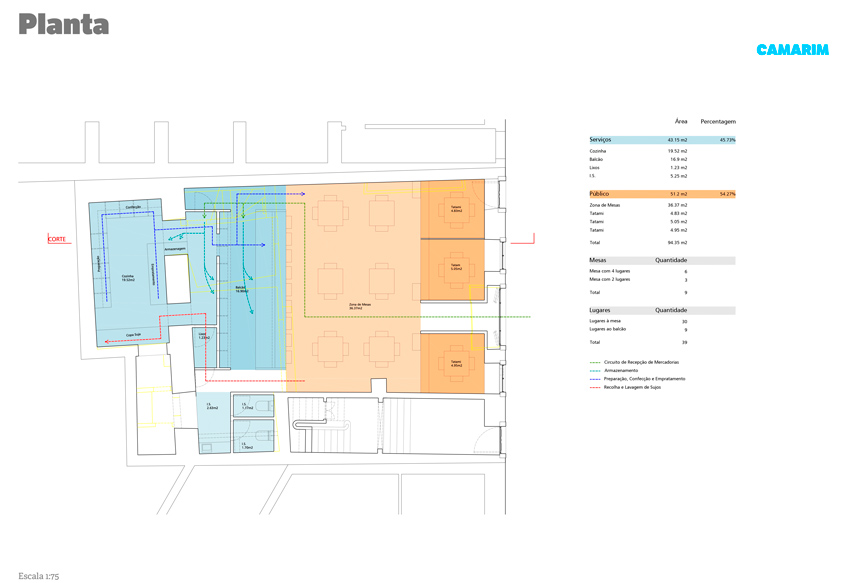
Project plan © Camarim Arquitectos
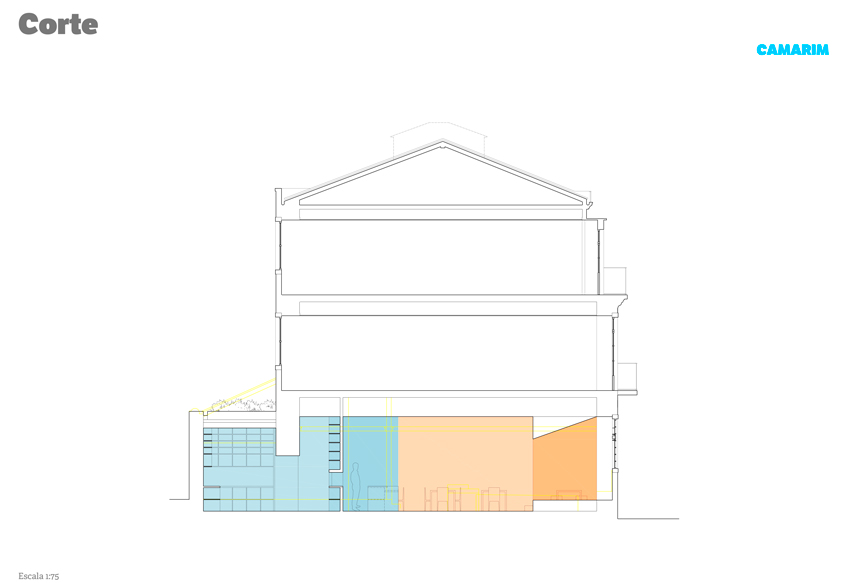
Project section © Camarim Arquitectos
Vasco Correia: The idea that the interior and exterior are completely separated, that there is no dilution between things makes the project very interesting for us. Because it’s almost an anti-modern design in that sense in which the interior space and atmosphere of the restaurant are completely dense, are completely intimate, there’s not much light, the sound as you said on the inside is very special, acoustics is very special. Everything is controlled in a very "ad hoc" way, and very simple, very practical, but still done with an attention and with a sensitivity of a Japanese family. Born in a different environment, they came from Hiroshima and so to them this is normal, this is nothing special, it’s a normal thing, but for us it’s quite special that they did it without any special means, in a very rudimentary way, but that they have done so with this care and this dedication.
Vasco Correia: A ideia de que o interior e exterior são completamente apartados, de que não há nenhuma diluição entre as coisas torna o projeto muito interessante para nós. Porque é quase um projeto anti-moderno nesse sentido em que o espaço interior e a atmosfera do restaurante são completamente densas, são completamente intimistas, não há muita luz, o som como tu disseste no interior é muito especial, a acústica é muito especial. Tudo é controlado de uma maneira muito “ad hoc", e muito simples, muito prática, mas ainda assim feito com uma atenção e com uma sensibilidade de uma família que é japonesa. Que nasceu num meio diferente, eles vêm de Hiroshima e então para eles isto é normal, isto não é nada de especial, é uma coisa normal, mas para nós é bastante especial que eles o tenham feito sem meios nenhuns de especial, de uma forma muito rudimentar, mas que o tenham feito exactamente com esse cuidado e essa dedicação.
Vasco Correia: And what’s interesting is that they have always maintained an absolutely traditional and absolutely simple standard, reducing to the essential and the absolutely authentic thing of Japanese food, and always giving priority to the highest quality products with the greatest possible honesty. And this is something we also try to express with architecture, in the end combining or re-combining the elements that were there in a different way. Almost as if everything was purified, as if everything was filtered and we kept what’s really important and treated it in a way until it became more intense. And everything that was badly resolved, that was ineffective, that wasn’t consistent, is eliminated.
Vasco Correia: E o que é interessante é que eles sempre mantiveram um padrão absolutamente tradicional e absolutamente simples, e reduzindo-se ao essencial e à coisa absolutamente autêntica da comida japonesa, e privilegiando sempre os produtos da melhor qualidade com a maior honestidade possível. E isso é uma coisa que nós procuramos também exprimir com a arquitetura, no fundo combinando ou re-combinando os elementos que lá estavam de uma forma diferente. Quase como se tudo fosse depurado, como se tudo fosse filtrado e mantivéssemos aquilo que é realmente importante e que o tratássemos de uma forma até a ficar mais intenso. E tudo aquilo que estava mal resolvido, que era ineficaz, que não era consistente, é eliminado.
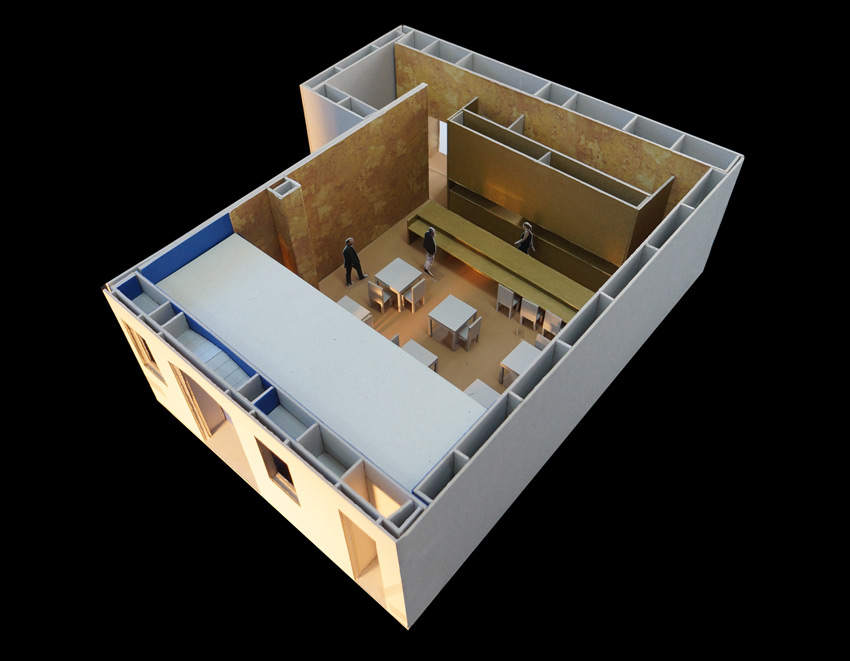
© Camarim Arquitectos
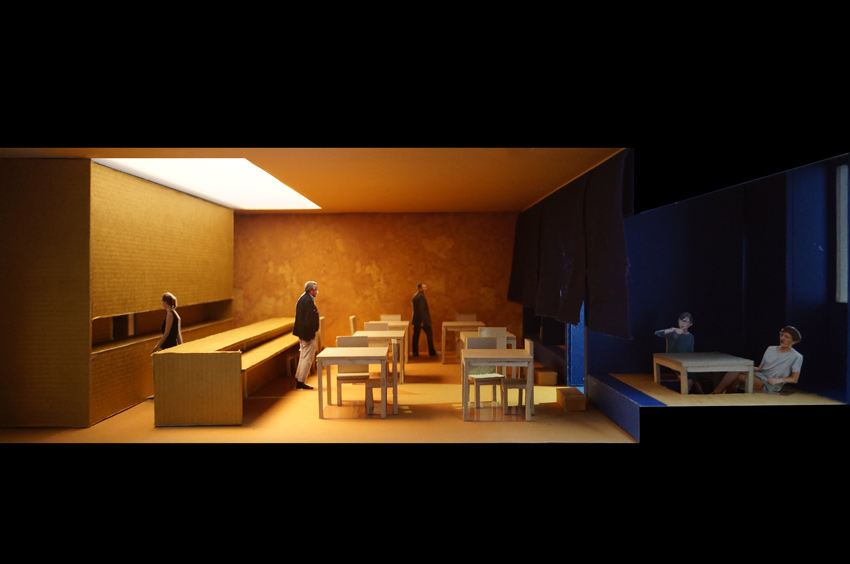
© Camarim Arquitectos
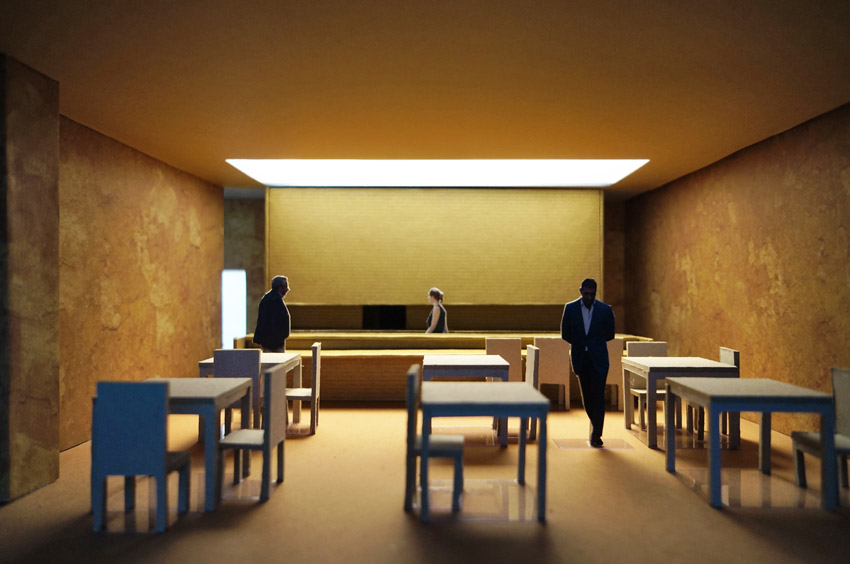
© Camarim Arquitectos
Vasco Correia: At the same time, we also didn’t have the presumption of making a completely traditional restaurant, that is to say, the idea is not to recreate... a Japanese tavern in Kyoto and bring it here. It’s always somehow a free, western interpretation of these elements. But what we do is that we don’t leave that essential, almost rudimentary, basic range of the essential elements of that architecture.
Vasco Correia: Depois ao mesmo tempo, quer dizer, também não tínhamos a presunção de fazer um restaurante completamente tradicional quer dizer, a ideia não é recriar…uma tasca japonesa de Quioto e trazê-la para aqui. É sempre de alguma forma um interpretação livre, nossa, ocidental, desses elementos. Mas o que fazemos é que não saímos dessa gama essencial e básica, quase rudimentar, dos elementos essenciais dessa arquitetura.
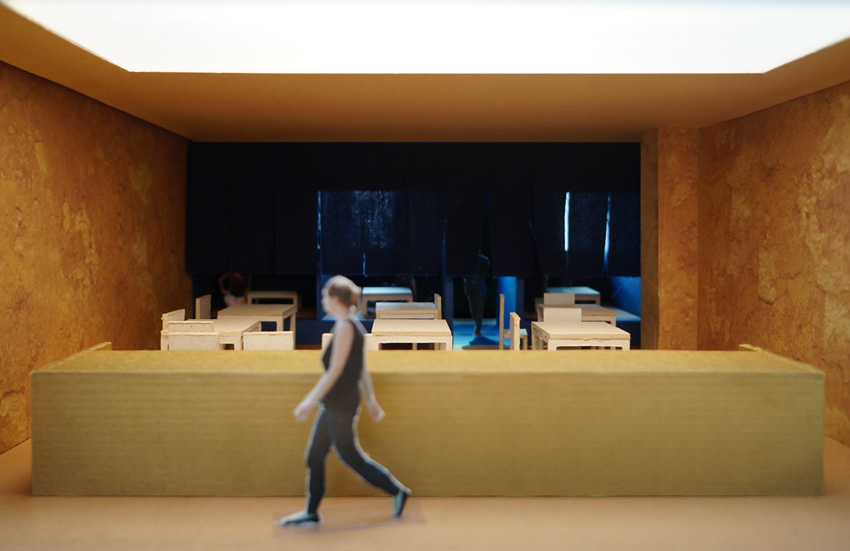
© Camarim Arquitectos
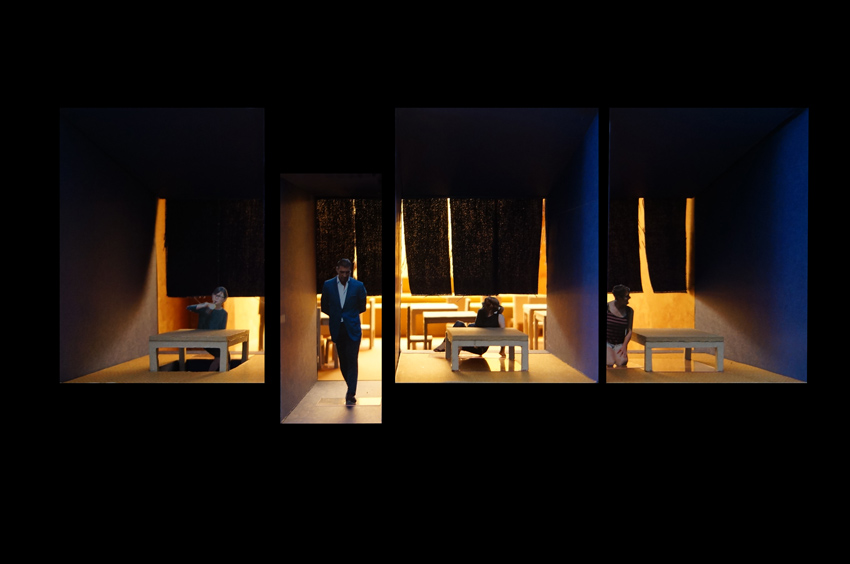
© Camarim Arquitectos
Patrícia Sousa: In this project what we tried to explore was the idea of how all the senses can contribute, all the senses and here it’s really all, because it’s a restaurant and you eat, taste and smell, the restaurant also has a particular smell... They can contribute to the perception of space and for you to enter that place, and to eat in that place is a complete experience, not only what you’re eating, but it’s all the atmosphere that the restaurant allows you to have.
Patrícia Sousa: Neste projeto o que nós procurámos explorar foi a ideia de como todos os sentidos podem contribuir, todos os sentidos e aqui é mesmo todos, porque é um restaurante e tu comes, degustas e cheiras, o restaurante também tem um cheiro particular… Podem contribuir para a percepção do espaço e para tu entrares naquele sítio, e comeres naquele sítio ser uma experiência completa, não é só o que estás a comer, mas é toda a atmosfera que o restaurante te permite ter.








